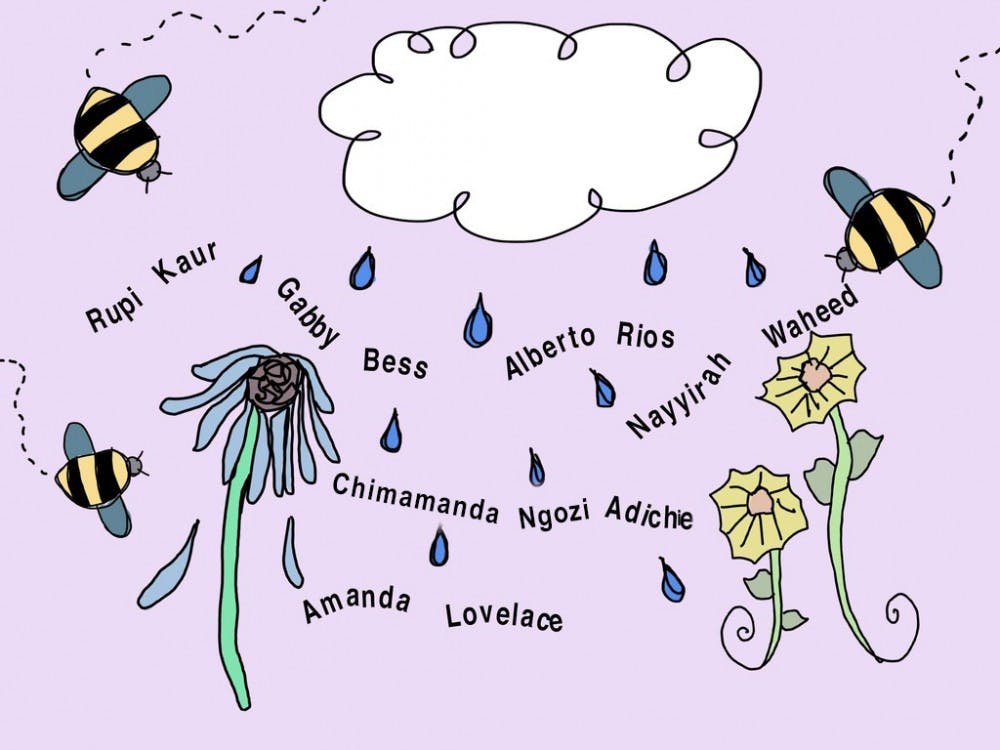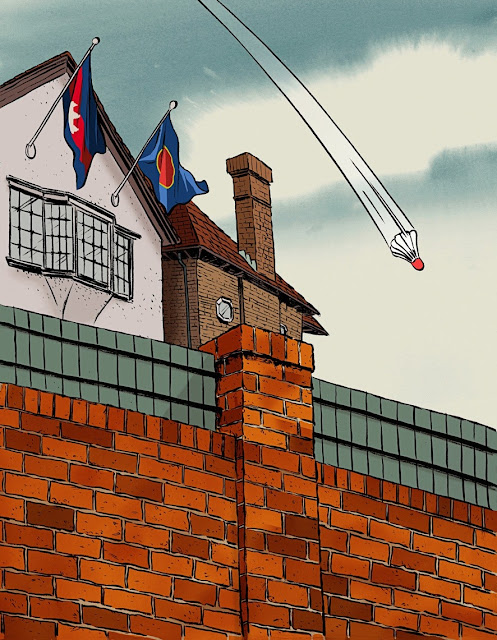20th Century History in 15 minutes
Inglés ISFDyT 35 - Estudios Interculturales I
viernes, 16 de septiembre de 2022
20th Century
jueves, 8 de septiembre de 2022
London Bridge is down
Why Queen Elizabeth II's residence casts long shadow over British royal family
 |
| What is the Commonwealth? |
The new King will be known as King Charles III
Brief History of the Royal Family
jueves, 18 de agosto de 2022
English as a lingua franca?
21st century Literature in the classroom
Twenty-first century literature deserves a place in the classroom
Studying modern novels, short stories and poetry can provide insights into the modern world
Photo by Heather Brumfield | The State Press"Contemporary poets connect with their audience in ways that classical literature could not." Illustration published on Thursday, Oct. 26, 2017.
Most students have studied classic literature, learned the history behind these stories and experienced, in a small way, how the world used to be.
English and history, as disciplines, share a close connection, as literature often reflects certain aspects of the world at the time it was written.
Even though modern history is taught in classrooms, modern literature written in the 21st century is often overlooked.
“Modern literature features a lot of underrepresented voices,” O’Flaherty said. “In classical literature, we aren’t really exposed to a lot of women’s voices, or people of color’s voices, but in the twenty-first century these kinds of opinions are really being brought out.”
Katherine O’Flaherty, an honors faculty fellow at Barrett, The Honors College, said that modern literature is indeed pertinent to modern society.
“Modern literature features a lot of underrepresented voices,” O’Flaherty said. “In classical literature, we aren’t really exposed to a lot of women’s voices, or people of color’s voices, but in the twenty-first century these kinds of opinions are really being brought out.”
Chimamanda Ngozi Adichie, a modern writer, discusses themes of Nigerian culture and feminism, and is an influential promoter of social change, multiculturalism and female agency in her work.
Many novels and short stories of the 21st century reflect social issues of modern-day society. Studying or getting involved in any way with the literature of today’s times can promote discussion and the acceptance of new ideas.
A challenge that comes with this, however, is the palatability of modern-day texts.
“Things like race, for example, are always difficult for people to talk about in the classroom,” O’Flaherty said. “But I find that using fiction to talk about those subjects provides students who normally wouldn’t be comfortable with talking about these subjects with a way to discuss them.”
In addition to novels and short stories, there is also an abundance of modern poetry that deserves to be brought to the classroom.
“There’s a poet named Alberto Ríos — he was actually the Arizona poet laureate for some time — and he writes about a range of topics that students can relate to,” O’Flaherty said. “He writes about the southwest, the border, the Mexican-American experience and all those kinds of issues ... The thing about poetry is that it reflects the world around us in ways we don’t always give it credit for.”
While modern poetry can take on a political tone, it is also relatable to many young adults on a deeply personal level.
Rupi Kaur, the author of "Milk and Honey," writes short poems about heartache which are often accompanied by simple line-art illustrations. Themes such as pain and heartache are fairly ubiquitous and lend themselves to be extremely relatable to a wide audience.
“There’s some level of fear associated with poetry,” O’Flaherty said. “Some people have a sense that poetry is hard and inaccessible, and that it’s just something that other people read. When you do read it, it’s actually very relatable and understandable.”
Modern works are also more accessible nowadays with newer technology like e-readers, making it quicker and easier for people to seek and find today's most pertinent work.
For students, reading and studying literature published in recent times can prove beneficial for interpreting the social and political problems plaguing today's society.
Source: By Karishma Albal https://www.statepress.com/article/2017/10/twenty-first-century-literature-deserves-a-place-in-the-classroom.
viernes, 15 de julio de 2022
The Embassy of Cambodia II
In groups of three or four, choose one topic and prepare a 5 minute presentation and share the link in the comment section. Deadline: 20th August. Leave your names, the chosen topic and the link to the audio in the comment section. You can upload your audio file to Soundcloud and then share the link on this blog.
1-Author Biography
2-Plot Summary
3-Characters
Themes:
4-Ignorance
5-Postcolonialism
6-Slavery
7-Suffering
8-Symbolism: Water and swimming
9-Point of View
10-The New Yorker-where the story was originally published
11-Locations
12-Historical research on the colonization of Africa
13-Historical Context
14-The Khmer Rouge
15-London 2012 Olympic Games
martes, 21 de junio de 2022
Short Story:
The Embassy of Cambodia
By Zadie Smith
How To Write a Book Review
by Bill Asenjo
Before reading, consider:
- Title - What does it suggest?
- Preface or Introduction - Provides important information about the author's intentions or the scope of the book. Can you identify any limitations? Has the author ignored important aspects of the subject?
- Table of Contents - Shows how the book's organized -- main ideas, how they're developed (chronologically, topically, etc.)
Points to ponder as you read the entire book:
- What's the general field or genre? Does the book fit?
- From what point of view is the book written?
- Do you agree or disagree with the author's point of view?
- Make notes as you read, passages to quote in your review.
- Can you follow the author's thesis, "common thread"?
- What is the author's style? Formal? Informal? Suitable for the intended audience?
- Are concepts well defined? Is the language clear and convincing? Are the ideas developed? What areas are covered, not covered?How accurate is the information?
- Is the author's concluding chapter, the summary, convincing?
- If there are footnotes, do they provide important information? Do they clarify or extend points made in the text?
- If relevant, make note of the book's format - layout, binding, etc. Are there maps, illustrations? Are they helpful?
- Is the index accurate? What sources did the author use -- primary, secondary? Make note of important omissions.
- What did the book accomplish? Is more work needed? Compare the book to others by this author, or books in this field by other authors. (Use the books listed in the bibliography.)
Writing the Review:
- Include title, author, place, publisher, publication date, edition, pages, special features (maps, etc.), price, ISBN.
- Hook the reader with your opening sentence. Set the tone of the review. Be familiar with the guidelines -- some editors want plot summaries; others don't. Some want you to say outright if you recommend a book, but not others.
- Review the book you read -- not the book you wish the author had written.
- If this is the best book you have ever read, say so -- and why. If it's merely another nice book, say so.
- Include information about the author-- reputation, qualifications, etc. -- anything relevant to the book and the author's authority.
- Think about the person reading your review. Is this a librarian buying books for a collection? A parent who wants a good read-aloud? Is the review for readers looking for information about a particular topic, or for readers searching for a good read?
- Your conclusion should summarize, perhaps include a final assessment. Do not introduce new material at this point.
- To gain perspective, allow time before revising.
Writing a Fiction Book Review
Note: You don't have to answer every question -- they're suggestions!
Points to Ponder:
- What was the story about?
- Who were the main characters?
- Were the characters credible?
- What did the main characters do in the story?
- Did the main characters run into any problems? Adventures?
- Who was your favorite character? Why?
Your personal experiences
- Could you relate to any of the characters in the story?
- Have you ever done or felt some of the things, the characters did?
Your opinion
- Did you like the book?
- What was your favorite part of the book?
- Do you have a least favorite part of the book?
- If you could change something, what would it be? (If you wish you could change the ending, don't reveal it!)
Your recommendation
- Would you recommend this book to another person?
- What type of person would like this book?
Things to Bear in Mind:
Don't be intimidated by famous authors -- many have written mediocre books.
Don't review books by people you know, love, or hate.
Do you want to be a book reviewer? Start by doing. Write book reviews for local newspapers. If they don't have a book review section, start one.
If you have a specialty -- romance, mystery, dark fantasy -- cultivate it, become an expert.viernes, 3 de junio de 2022
Race, Empire and English Language Teaching
Dr. Motha discusses her book, Race, Empire, and English Language Teaching: Creating Responsible and Ethical Anti-Racist Practice. Published by Teachers College Press, the book is a 2015 Critics Choice Award winner as recognized by the American Educational Studies Association (AESA).
Race, Empire, and English Language Teaching is a timely and critical look at the teaching of English. The book shows how language is used to create hierarchies of cultural privilege in public schools across the United States. Drawing on the work of four ESL teachers who pursued anti-racist pedagogical practices during their first year of teaching, the author provides a compelling account of how new teachers might gain agency for culturally responsive teaching in spite of school cultures that often discourage such approaches. She combines current research and original analyses to shed light on real classroom situations faced by teachers of linguistically diverse populations.
CEHD PhD Colloquium With Dr. Suhanthie Motha from GMU-TV on Vimeo.
Here´s a link to the prologue and introduction of the book . Click HERE to download.
This is an article on Smithsonian magazine about Buenos Aires. Click HERE to read it.
If you´d like to leave a comment, I´d be pleased to read what you have to say.😎
viernes, 20 de mayo de 2022
How language shapes the way we think
viernes, 6 de mayo de 2022
The English Effect
The English language is perhaps the United Kingdom’s greatest and yet least-recognised international asset. It is a cornerstone of their identity and it keeps them in the mind of hundreds of millions of people around the world, even when they are not talking to them.
Read British Council publication Click HERE
jueves, 23 de abril de 2020
21/5/2021
- In multicultural communities, we live alongside each other.
- In cross-cultural communities, there is some reaching across boundaries.
- In intercultural communities, there is comprehensive mutuality, reciprocity, and equality.
Now you are ready to leave a WONDERFUL comment on this blog!!!! Remember to follow Kevin´s advice!!!
















